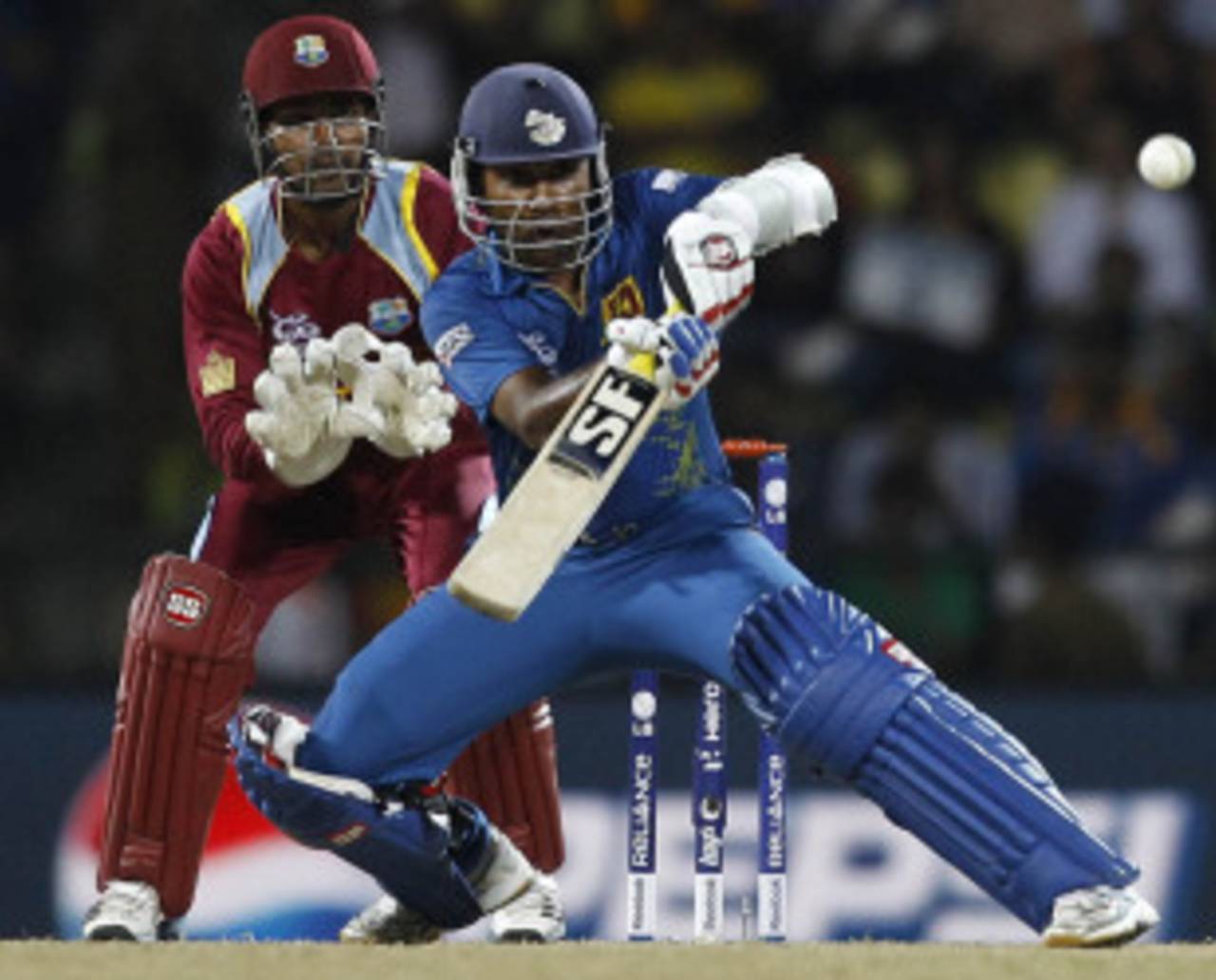On a night stacked with positives for Sri Lanka,
Mahela Jayawardene's unbeaten 65 from 49 deliveries was perhaps the most heartening of all. Sri Lanka have prospered in this format when he has made runs at the top of the innings, making him a little bit like a right-handed Sanath Jayasuriya who has bartered brutality for refinement.
Against New Zealand, Jayawardene threatened form with a rapid 44.
Against West Indies he flowed rhythmically into it. With both openers having made fifties in the Super Eights, and Kumar Sangakkara also among the runs, the chances in this tournament for Sri Lanka's middle order to prove that it has become more robust are getting fewer.
A cursory glance at Jayawardene's score on the sheet might suggest his innings was a run-of-the-mill Twenty20 knock; a strike rate of 133 with ten boundaries and a six. But that's too simple. No innings of his is quite so humdrum. He feels the game, breathes it. At the crease, and as a captain, he has his ear to the ground, and his finger on the pulse. In the Super Eights opener, with 179 to chase down, Jayawardene was aggressive throughout his 26-ball salvo, as he needed to be. On Saturday, it was like he composed a piece of music.
The four through point after three dot balls in the first over was the first clang of percussion in the seconds after the audience has calmed into an expectant hush; the piano chord heralding commencement. Tillakaratne Dilshan sounded out three bold notes of his own in the next over, crashing Fidel Edwards for consecutive fours through the offside, but while his partner held the limelight, Jayawardene played second fiddle - his intonations audible only occasionally.
At the end of the Powerplay, with Sri Lanka well ahead of the required rate, Jayawardene dipped into a quieter movement alongside Sangakkara. Those overs were defined by a more careful cadence, and Jayawardene barely progressed at a run-a-ball. Sunil Narine was negotiated watchfully on a track assisting spin, but occasionally a louder thrum came along, like when he reverse-paddled Narine for four, through where slip would have stood. After the match had been made safe, Jayawardene began to go faster. There is a chance Sri Lanka's net run rate will determine qualification to the semi-finals, and so a spate of boundaries brought the innings to a crescendo. The crowd might have wished West Indies had made more, so that Jayawardene could have kept playing for them.
As a successful Twenty20 batsman, he is often nominated as an advert for the enduring effectiveness of convention in every format, but in reality, Jayawardene is as innovative as they come. It's just that the grace that pervades every aspect of his game gives the illusion that he only plays the old-style strokes. Earlier in his career, and at times even now, his release stroke was an advancing shot over midwicket. In the hands of anyone else, that would be a heave across the line. When Jayawardene plays it, it seems like the very shot that inspired the MCC coaching manual.
At times even now, his release stroke [is] an advancing shot over midwicket. In the hands of anyone else, that would be a heave across the line. When Jayawardene plays it, it seems like the very shot that inspired the MCC coaching manual.
In Twenty20s, Jayawardene scoops with the best of them, and though he has had trouble timing reverse shots in the past, now sweeps past point with aplomb. In the practice match against West Indies before the tournament began, he played a reverse pull off Kieron Pollard that flew over short-third man for four. He is a small man compared to Twenty20 behemoths like Kevin Pietersen, and he is not as fond of weights and protein shakes as Brendon McCullum, but he has found ways to number among the best.
"When T20 came around, I had to push myself with my limitations," Jayawardene said after his innings at Pallekele. "I had to make sure that I was a bit more innovative. I don't have the power like Chris Gayle or Kieron Pollard. For me it's all about hitting gaps. When I want to hit out I can hit. Maybe not 100 metres, but 70 or 75 metres. It just helps me opening the batting, as I have more time to work with."
There is a strong argument for Jayawardene moving permanently up the order to open the innings in limited-overs cricket, where he has played with the kind of freedom not afforded him in an inexperienced middle order. In ODIs, his average as an opener is almost 17 better than his career average, and his Twenty20 numbers are similar. Too often he has sacrificed his favoured spot to accommodate team-mates who are not as effective providing good starts, but are wholly unsuited to batting in the middle order. Though Jayawardene demotes himself to make the most of Sri Lanka's resources, perhaps the team would be better served if their best opener remained in that position permanently.
Following two good innings at the top, Jayawardene is likely to face the new ball for the remainder of the World Twenty20 at least. Sri Lanka are all but through to the semi-finals, with a far superior net run rate than that of England and West Indies - both of whom need to win handsomely on Monday to push the hosts out of the top two. Jayawardene has struck form at the right time for Sri Lanka and, as he has proven with centuries in the World Cup semi-final in 2007 and the World Cup final last year, he has a habit of reserving his best for the crunch encounters.
Andrew Fernando is ESPNcricinfo's correspondent in Sri Lanka
